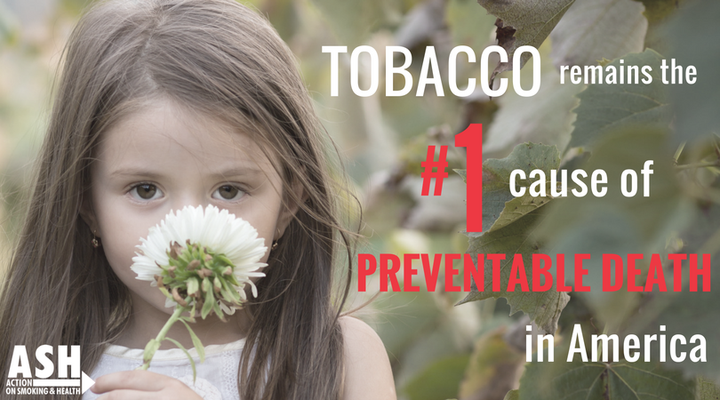May 31st is World No Tobacco Day (WNTD), the day we dream of a world where millions of people don’t die needlessly from an intentionally addictive product. “Dream” is the correct word, because we are still heading the wrong way in terms of global smoking – there will be more smokers tomorrow than today.
Happily, in the United States we have made tremendous progress in reducing smoking prevalence. Unhappily, we have swept the problem under the rug rather than truly dealing with it. Smoking was once ubiquitous for all adults. Now it is a problem of the poor, ethnic minorities, and those with less education. In other words, the groups that can least afford the dire consequences.

The theme of World No Tobacco Day 2017 is “Tobacco – a threat to development.” It certainly is. The United Nations Development Program and the World Health Organization have estimated that tobacco use saps nearly two percent of global GDP. Most economists think President Trump’s promise to reach 3 percent growth in his first year is unachievable, so one or two percent is a big deal.
In addition to killing nearly half a million Americans a year – over 20 percent of all deaths – tobacco costs the U.S. more than $300 billion. That’s more than $1000 for every man, woman and child in the U.S., smoker or nonsmoker.
But the situation is even worse than that sounds, because tobacco use disproportionately impacts communities that are most in need of development. Smoking has become a poverty issue, a social justice issue, and a racial issue, thanks to tobacco industry targeting of specific groups. When you have an addictive product, individual consumer wealth matters a lot less – once you hook them, you have them, regardless of cost.
The most notorious example is an effort by R.J. Reynolds to target gay and homeless people in San Francisco, which they name “subculture urban marketing,” or Project SCUM. They may be smarter about nomenclature now, but the tobacco industry still micro-targets thousands of groups. You may have seen the recent Truth ads about how there is much more tobacco advertising and many more tobacco retailers in predominately black neighborhoods.
The U.S. is 43rd in the world in life expectancy, yet we spend more on health care, by far, than any other country. Smoking one cigarette reduces a person’s life by 11 minutes. Magically getting rid of tobacco would extend the average smoker’s life by about 10 years.
Among the many tragedies of this story is that all this harm is completely preventable. We know from vast experience exactly which measures reduce smoking, and it pays for itself, and in fact has a handsome return on investment. Some states have embraced these measures. Others have not, and it is painfully obvious which is which when you look at a smoking prevalence map. States that lag behind implementation of tobacco control measures and invest less in preventing and treating tobacco have higher rates of smoking prevalence and higher rates on tobacco related diseases.

Human development cannot succeed without improving health, and the U.S. won’t be able to make serious health progress without doing more about tobacco. It’s clear that in 2017 we can’t count on the federal government to take the lead. Fortunately, most health issues are the purview of states. They just need to find the political will, and stop putting tobacco industry profits above the health of their citizens.
Written in conjunction with ASH Deputy Director for Policy Chris Bostic.